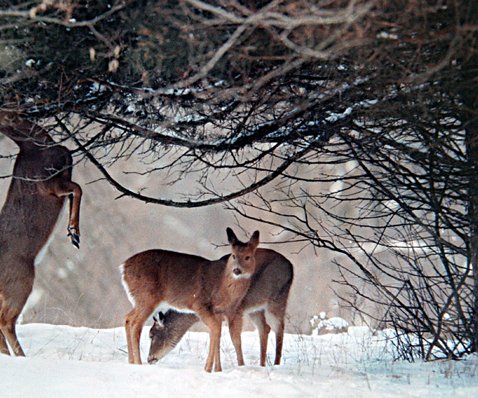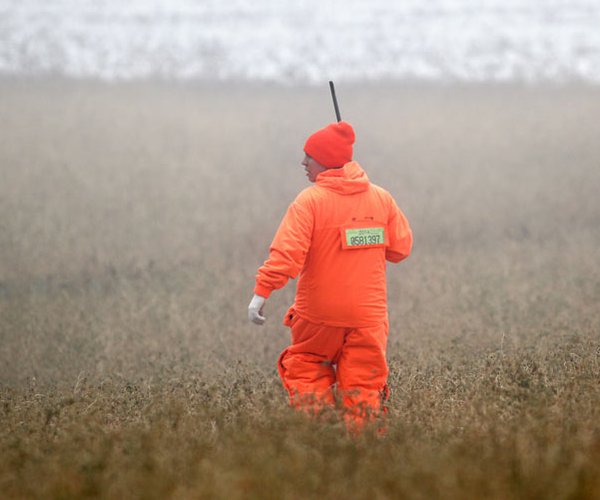Summer rainfalls are, and will, impact outdoor activity through the November gun deer season. Impacts will be felt getting to a duck blind, hunting heavy cover for ringnecks, trout fishing to mid-October, and removing burs from blaze orange clothing.
“Trout fishing has been really slow in July, but the heavy rains, even flooding, were helpful to begin flushing out silt in area streams. For the first time in three years, I was walking on gravel in local streams,” said Bret Schultz, an avid, everyday angler. “Small hoppers are beginning to work, but the lush vegetation and hordes of mosquitoes and gnats can be troublesome. I laid down my fly rod in tall grass and spent two minutes looking for it.”
Spring’s increased nesting of upland ring-necked pheasants, ruffed grouse, and wild turkeys may have been partially washed away by heavy rains during chick hatching and growing. White-tailed deer fawns, does, and bucks are enjoying summer cover from insects and fantastic feeding.
Deer are already beginning to take young corn ears that are just now being pollinated.
Corn is standing tall, balanced by two and three nodes of prop roots and tall stalks will provide camouflage from hunters if fall fields are muddy slowing fall harvesting.
Forest trails are likely to have deep ruts, troublesome downfalls, and heavy foliage from summer’s ample moisture.
Banner spongy moth populations were cut short by rain-enhanced virus and fungal diseases during the larval stages. The rains helped some trees grow a second set of broad leaves, but those extra leaves in late fall will make woodland walking noisier and treacherous at times.
Mosquitoes and gnats are flourishing with high water and standing water.
PJ Liesch, Director of the University of Wisconsin Insect Diagnostic Laboratory in Madison, said it is a mixed bag of pluses and minuses because there are 50 species of mosquitoes in the state.
“Some have several generations during a year while others just one,” he said. “Some mosquitoes have been pretty intense this summer and that’s likely to continue because it will take a long time for some of the water to evaporate. A very dry spell might quiet things down for being outdoors, however.”
Other insects will be hit harder, like the spongy moths were, by fungus, bacterium or virus diseases during wet, humid conditions.
An interesting, but limited, activity occurred in places when massive periodic cicadas were locally collected daily and shipped to Chicago for food sales. Such a local and massive removal of a breeding population could greatly impact feature generations. Removal of animals from a state park without seasons and, for commercial sale, is illegal.
While berries, nuts and mushrooms can be taken from state park land, they cannot be sold, only consumed or gifted to others.
Early frosts will be the archer’s friend stopping bugs and other insects.
Ticks, on the other hand have a long life cycle and weather extremes now are only likely to show up as population swings a year or more from now.
Good rains are finishing summer fruits and nuts, making larger specimens possible but getting to the trees and shrubs will be more difficult with ample understory growth. Also leaf defoliation of some trees and shrubs resulted in immature fruit drop, which spelled doom for the fall season regardless of how healthy the plant now appears.
Pluses and minuses are bound to overflow regardless of the quarry.
Anticipate problems and rewards. Consider the landowners’ assets and debits.
Harvest crops may be late, but ample. A farmer’s bottom line and mental frame of mind could be riding high, or bottomed out. Listening to a landowner’s tales may explain a willingness, or not, of wanting guests tramping across fields. This may be the season to leave the owner alone, celebrate a good fortune, or help repair storm damage instead of hunting.
It could be that sharing a chicken-of-the-woods mushroom, or a venison tenderloin would put a smile on a farmer’s face.
— Jerry Davis is an Argyle native and a freelance writer who lives in Barneveld. He can be reached at sivadjam@mhtc.net or at 608-924-1112.





